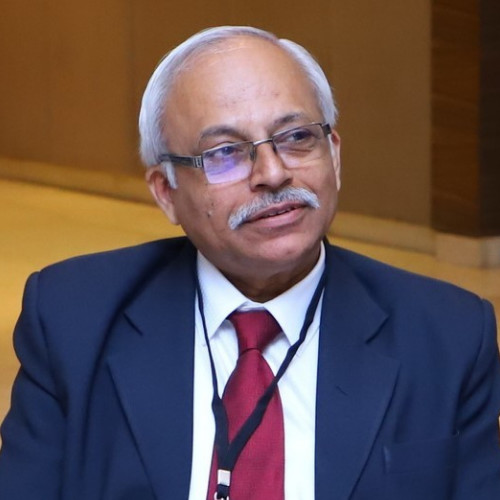Prescription Perils
 Amidst phenomenal pharmaceutical advancements lies a pressing concern: patient safety. Medicines are powerful but double-edged swords, leaving long-lasting and potentially undetected adverse effects. In view of the critical need for a robust pharmacovigilance system and stringent drug regulations, it’s time to revamp India’s drug regulatory system, prioritise safety aspect in healthcare, and unite all stakeholders.…
Amidst phenomenal pharmaceutical advancements lies a pressing concern: patient safety. Medicines are powerful but double-edged swords, leaving long-lasting and potentially undetected adverse effects. In view of the critical need for a robust pharmacovigilance system and stringent drug regulations, it’s time to revamp India’s drug regulatory system, prioritise safety aspect in healthcare, and unite all stakeholders.…
Dr Amitav Banerjee
Commemorating World Patient Safety Day encourages a thoughtful reflection on patient safety amid technological advancements and our increasing reliance on pharmaceuticals. This year’s theme, “Engaging patients for patient safety,” resonates with the slogan, “Elevate the voice of patients.”
The use of pharmaceuticals has surged over recent decades, luring individuals towards a passive lifestyle with the promises and solutions presented by market forces. The dominance of automobiles in public spaces has pushed pedestrians to the margins, resulting in accidents and injuries. Sedentary living, exacerbated by a lack of spaces for walking and cycling, is now commonplace. Affluence has fostered the expansion of the middle class, but it has also brought with it the consequences of a couch potato lifestyle, fast food consumption, and home deliveries from food chains.
Replacing Behavioural Approaches with Pharmaceuticals
This shift towards convenience and comfort has also seen pharmaceuticals increasingly replace behavioural approaches to address lifestyle disorders. In the past, obesity was tackled through strategies such as increased physical activity and dietary modifications. Surgical advancements like bariatric surgery now offer alternatives to these more labour-intensive measures. Notably, emerging anti-obesity drugs are poised to disrupt the pharmaceutical market, with some estimates projecting a staggering $77 billion turnover by 2030.
The Double-Edged Nature of Medicines
Medications are potent tools in the hands of physicians when used judiciously in consultation with patients. However, like all powerful tools, they come with inherent risks. Sun Tzu’s wisdom from “The Art of War” reminds us that a thorough understanding of both the advantages and disadvantages is essential when wielding such powerful instruments.
The unbridled consumption of drugs, divorced from the art of medical practice, has led to iatrogenesis – characterised by adverse events resulting from medical interventions. Some critics have even pointed to the medical establishment itself as a significant threat to health.
 Historical Patterns
Historical Patterns
Iatrogenesis has been a consistent companion to medical progress. While it was less prevalent in the 18th century, the first half of the 19th century witnessed its increase, often associated with overzealous yet misguided medical interventions that sometimes caused more harm than treating the underlying conditions. The advent of bacteriology heralded more rational and scientific medical practices, including serum therapies and antibiotics like sulpha drugs. These developments made treatments less harmful than the diseases they aimed to cure and contributed to a reduction in iatrogenesis. However, the enthusiasm surrounding the “Germ Theory of Disease” and the successful treatment of bacterial infections with antibiotics may have obscured sporadic cases of adverse events at the individual level, even as the benefits were substantial at the population level.
The Thalidomide Tragedy and Ongoing Vigilance
Success can breed complacency. The thalidomide tragedy of the 1960s served as a stark reminder of the potential dangers of medical interventions. The drug caused severe birth defects in thousands of children born to mothers who had used it during the early stages of pregnancy for relief from nausea and morning sickness.
Iatrogenic adverse events have become evident in recent history, often only after widespread use of drugs by the public. The non-steroidal anti-inflammatory drug, nimesulide, was withdrawn from the market in several countries following reports of liver damage.
Inadequate Pharmacovigilance in India
To effectively capture data on iatrogenesis, a robust pharmacovigilance system is essential. This system involves reporting any adverse events stemming from drug use or medical procedures, with both patients and healthcare providers playing a crucial role. Sadly, such a system is lacking in our country, and research indicates that most physicians are unaware of the necessity and procedures for reporting adverse events. Furthermore, the inundation of the market with various drugs and the prevalence of polypharmacy make it increasingly difficult to pinpoint the cause of adverse reactions and potential drug interactions. In an era of medical sub-specialisation, patients may consult multiple specialists and receive multiple prescriptions, further complicating the potential for drug interactions.
The Importance of Upstream Drug Regulations
While significant emphasis is placed on the downstream doctor-patient relationship, it’s equally crucial to focus on the upstream environment of drug regulations. At the doctor-patient level, meaningful discussions about the potential risks and benefits of each medication or intervention can help mitigate iatrogenesis. Patient education is also vital, encouraging diet and lifestyle modifications that can reduce the need for medications to manage chronic conditions like obesity, diabetes, and hypertension. Raising awareness of pharmacovigilance is essential for both patients and healthcare workers to enhance the reporting of adverse events in the country.
Although these measures can address iatrogenesis at the interface between healthcare providers and patients, ensuring the quality control of drugs during manufacturing, storage, and distribution is crucial to prevent hazards stemming from substandard drugs. Unfortunately, in our country, the upstream drug regulation environment is far from foolproof.

Recent Setbacks
Recent events have dealt a significant blow to India’s reputation as the pharmacy of the world. The World Health Organization (WHO) issued an alert on October 5, 2022, regarding cough syrups manufactured in India after 69 children in Gambia lost their lives due to their consumption. The cause of death was the contamination of these syrups by diethyl glycol (DEG), an industrial solvent known to cause kidney failure. The nation had scarcely begun to recover from this incident when another tragedy unfolded within a month, with 19 children in Uzbekistan losing their lives due to cough syrup contamination by DEG.
India’s track record of DEG poisoning is deeply concerning. The nation has witnessed five major DEG poisoning events. The first occurred in Chennai in 1972, claiming the lives of 15 children. The second took place in Mumbai in 1986 at the renowned J J Hospital, resulting in the deaths of 14 patients. The third event transpired in Bihar in 1988, causing the demise of 11 patients. In 1998, Gurgaon experienced the fourth event, with 33 children losing their lives after consuming DEG-contaminated cough syrup. The most recent incident occurred in 2019 when 12 children from Ramnagar, Jammu, suffered the same fate.
These instances of DEG-associated child fatalities merely scratch the surface, much like canaries in coal mines serving as warnings. They underscore the prevailing myth of effective drug regulation in India. As a consequence, unsuspecting individuals in our country are at risk of exposure to substandard medicines that could lead to long-term damage to vital organs such as the kidneys and liver, as all drugs pass through these organs.
Need for Regulatory Reform and Patient Safety
The Indian regulatory system comprises the Central Drugs Standard Control Organisation (CDSCO) and 36 state level regulatory agencies. The CDSCO deals with new drugs, clinical trials, and imported medicines, while state authorities issue licenses for drug manufacturing, sale, and distribution. Among their essential responsibilities is the conduct of periodic inspections aimed at preventing the manufacture and distribution of substandard or adulterated drugs.
However, since India’s independence, responsibilities have been shuffled back and forth between central and state agencies with poorly defined roles and accountability in implementing regulations. Inter-state jurisdictional ambiguities have further complicated matters, contributing to multiple gaps. The lack of a clear hierarchy between CDSCO and state drug authorities has led to a dearth of accountability, resulting in inadequate regulations and a lack of uniformity in drug quality across India. These challenges are compounded by understaffing and insufficient laboratory facilities to conduct quality checks.
To address these multifaceted issues, urgent reforms are required in India’s drug regulatory system. The emphasis must be placed on quality control and patient safety as paramount priorities. Comprehensive debates involving all stakeholders, including patients, families, civil society, healthcare professionals, parliamentarians, and policy makers, are essential. At stake are human lives, and it’s time for India to regain its standing as a safe and reliable pharmacy for the world.
(The author is Chairperson, Institutional Ethics Committees of National Institute of Virology and AFMC, Pune. Also Professor, Community Medicine, and formerly epidemiologist with the Indian Armed Forces.)

